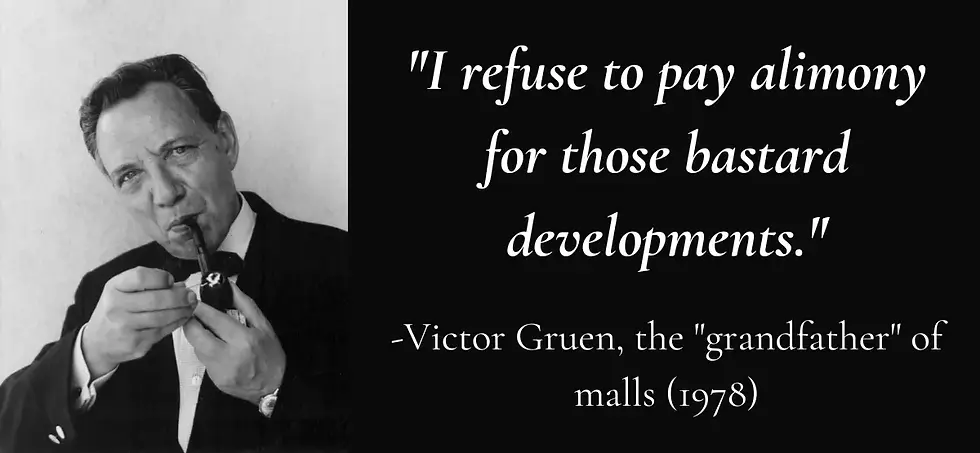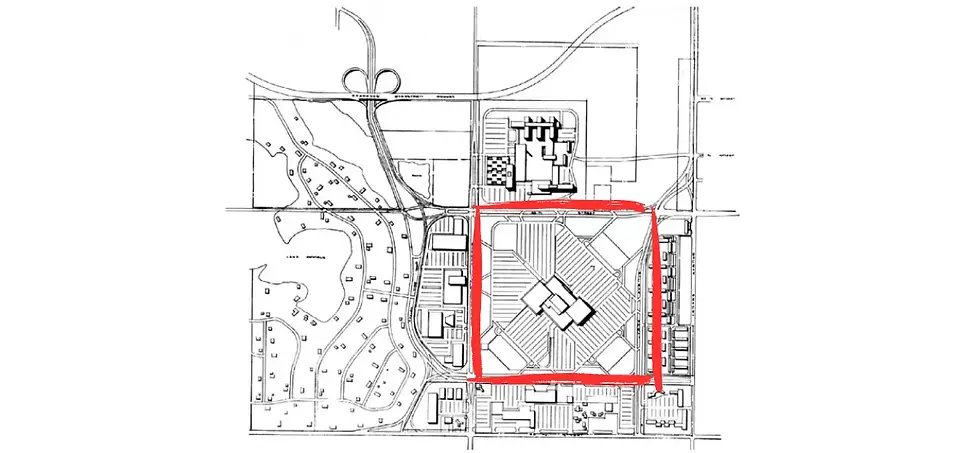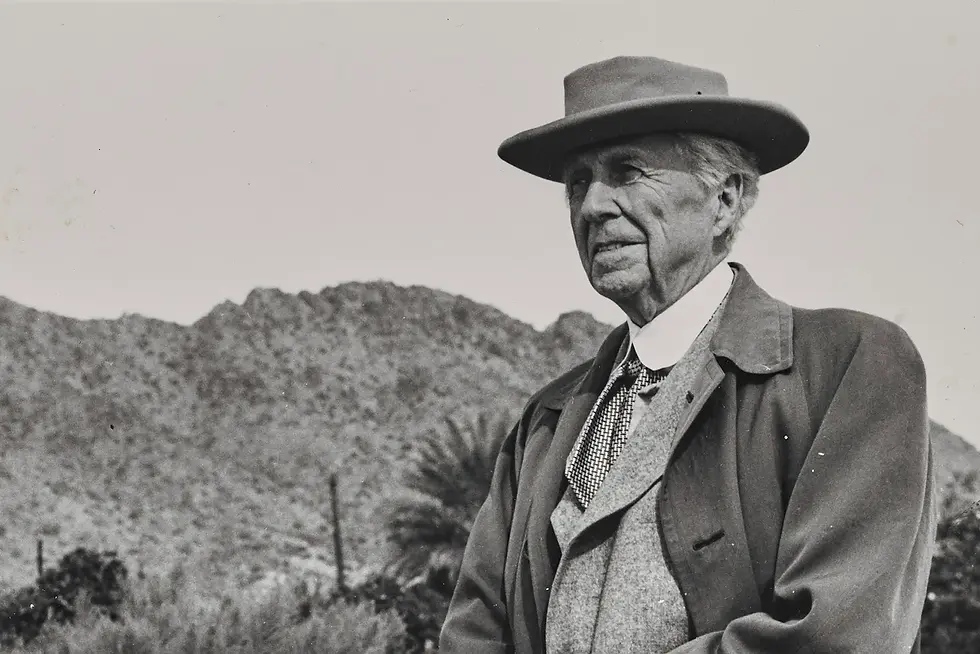The shopping mall concept has been wildly successful if measured by business metrics, however the "grandfather" of malls was deeply troubled by what they became.
In this three-part series we will examine the shopping mall experiment and pass judgment on whether it has been a success based on the original intent of the founder. The parts are:
👉 Was the Shopping Mall Experiment a Success?

In 1978, two decades after launching the first shopping mall and two years before his death, Victor Gruen was asked what he thought of what had become of the shopping mall concept he birthed. The 75-year-old retired Gruen responded, “I would like to take this opportunity to disclaim paternity once and for all.” He continued, “I refuse to pay alimony for those bastard developments. They destroyed our cities.”
Gruen’s Critique of His Creation
Throughout Gruen’s career he was an optimistic salesman for his shopping mall concept, and open about his desire to bring European charm and sophistication to the American suburbs. Later in his life, optimism was replaced by a biting disapproval which a grandfather gives best. He believed the global expansion of his concept had led to “a tragic downgrading of quality” and that his original “environmental and humane ideas… were not only not improved upon, they were completely forgotten… only those features which had proved profitable were copied.”
In the original Southdale Mall Project (i.e., Gruen’s first enclosed mall), the department store developer had acquired 463 acres for $1.5 million in 1952 (i.e., $17 million in today’s dollars). The shopping mall only consumed 84 acres, the rest of the master plan was reserved for houses, apartments, and a medical center, lake, highway, and school. The curse of the mall’s success was that the developers found themselves holding rapidly appreciating adjoining land. Rather than continuing with the master plan, they split the titles and sold them to other developers who had their own ideas and agendas.

This bothered Gruen and he placed much of the blame on developers for the “bastardization” of his shopping mall concept at Southdale and most future developments. He explained that motives for developers had changed from wanting to enhance family reputations and empires by being “earnestly responsible towards future generations,” to behaving more as anonymous “promoters and speculators who just wanted to make a fast buck.”
Frank Lloyd Wright’s Opinion
The legendary architect, Frank Lloyd Wright, visited Southdale shortly after it opened.

The opinionated American architect opined:
“What is this, a railroad station or a bus station? In all this there should be increased freedom and graciousness. It is wholly lacking. [As to the garden court] who wants to sit in that desolate looking spot? You’ve got a garden court that has all the evils of the village street and none of its charm… You have tried to bring downtown out here. You should have left downtown downtown.” -Frank Lloyd Wright

The developer for Southdale’s other anchor department store was also critical of the design, but for different reasons. While Wright was concerned about aesthetics, the opposing architect criticized the courtyard because the design did not promote enough shopping opportunities. He argued that a hallway with visible storefronts on both sides of the customer was best. Most malls built moving forward opted to set aside the large courtyard in favor of the inclusion of more and smaller shops around a narrow walkway.
Final Judgement
Clearly, the shopping mall was a success if measured by popularity and profitability. This point is difficult to argue.
Gruen’s views of what the shopping mall should be were shaped by an idealized memory of the downtown Vienna he was forced to flee leading up to WWII. In a quest to fill the hole of his “stolen” youth, he attempted to recreate the Vienna of his memory in real life. Knowing this matters because it helps to explain the dogged determination he had to bring his vision to life, and also the rather emotional way he responded when the end result failed to align with his ideal.










